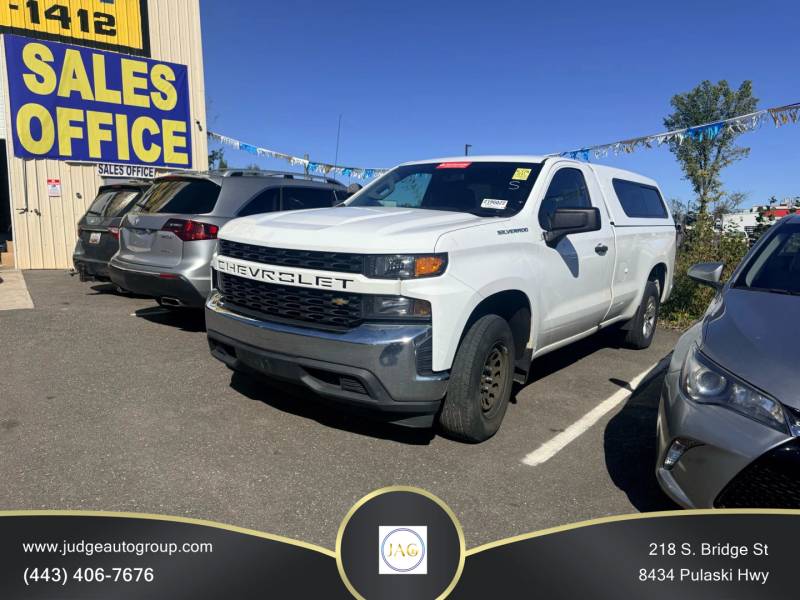Introduction: Why Maryland Vehicle Inspections Matter in 2025
Think of Maryland’s vehicle inspection system as the traffic gatekeeper: no car gets full registration until it passes a comprehensive safety inspection. This isn’t just bureaucracy—it’s how the state keeps unsafe, pollution-heavy, or poorly maintained cars off the road.
Yet many drivers still stumble on the same questions: What exactly gets checked? How long does it take? How much does it cost? And most importantly—how can I pass the first time?
Let’s break it all down with fresh 2025 insights, simple checklists, and insider strategies used by local inspection stations and car owners who know the system well.
What Is the Maryland Vehicle Inspection?
The Maryland Safety Inspection, regulated by the Maryland Motor Vehicle Administration (MVA), is a one-time inspection required before a vehicle can be registered or sold within the state.
Purpose:
To ensure every vehicle meets safety and emissions standards before hitting Maryland roads.
Who Conducts It:
Only authorized Maryland Inspection Stations licensed by the MVA—often auto repair shops, dealerships, or service centers.
When It’s Required:
- When buying a used vehicle in Maryland.
- When registering a vehicle bought out-of-state.
- After major repairs or boundary-moving modifications.
How the Inspection Works
Here’s a quick snapshot of the process:
| Step | What Happens | Pro Tip |
| 1. Schedule an Appointment | Visit a certified MVA inspection station. | Call ahead; some shops book out weeks. |
| 2. Technician Examines 36 Equipment Groups | From brakes to seat belts, lighting, steering, suspension, and tires. | Bring recent service records—they can clarify borderline items. |
| 3. Receive the Maryland Inspection Certificate (form VR-197) | Valid for 90 days from the inspection date. | Don’t wait—register quickly before expiration. |
🛠 Insider fact: Around 1 in 4 vehicles fail their first Maryland inspection, mostly for easy-to-fix issues such as worn tires, exhaust leaks, or faulty lights.
Maryland Vehicle Inspection Checklist (2025 Update)
Every MVA-certified inspector reviews these major categories:
- Brakes & Brake Systems
- Tires and Wheels (tread depth ≥ 2/32 inch)
- Steering and Suspension Components
- Exhaust System and Emissions Equipment
- Mirrors, Windows, and Windshield Wipers
- Lighting and Electrical Systems (headlamps, signals, brake lights)
- Safety Equipment (seat belts, horn, airbag indicator)
✅ Quick Pre-Inspection Tune-Up Tips:
- Check your lights. Replace any burnt-out bulbs before the appointment.
- Inspect your tires. Uneven tread wear or bald spots is a red flag.
- Top off fluids. Low brake or windshield washer fluid often triggers failure.
- Clear warning lights. A check-engine light won’t always fail you—but it will prompt deeper inspection.
- Clean your car. Dirt can obscure VINs or lights, slowing the process.
Maryland Vehicle Inspection Costs
The fee isn’t set by the MVA—it’s determined by each inspection station. On average in 2025:
| Vehicle Type | Average Cost |
| Passenger Car | $70 – $150 |
| Light Truck or SUV | $90 – $180 |
| Motorcycle | $50 – $100 |
Money Tip: Some stations offer a “free re-inspection” within 30 days if minor repairs are made and rechecked at the same location. Always ask before booking.
What Happens if You Fail?
If your car fails inspection, the mechanic will give you a detailed Safety Inspection Report listing problems and required repairs. You have 30 days (or 1,000 miles, whichever comes first) to fix the issues and return for reinspection.
Common Failure Items:
- Worn brake pads or rotors
- Cracked windshields
- Loose ball joints
- Exhaust leaks
- Blown bulbs
Recommended Inspection Stations (Examples – 2025)
| Station Name | Location | Highlights |
| Beltway Auto Center | Baltimore | Quick inspection turnaround; ASE-certified techs |
| Route 40 Motors | Ellicott City | Offers repair + reinspection discounts |
| Greenline Auto Service | Silver Spring | Specializes in hybrids and new EV inspection standards |
Emissions vs. Safety Inspection – Don’t Mix Them Up
Maryland has two different programs:
- Safety Inspection (one-time, pre-registration).
- Vehicle Emissions Inspection Program (VEIP) (biennial).
Even if your car passes safety inspection, you’ll still need VEIP tests every two years. However, newer EVs or low-mileage cars may qualify for temporary exemptions.
Expert Strategy: How to Pass the Maryland Vehicle Inspection First Try
Borrowed from experienced service managers and MVA-approved techs:
- Get a “mock inspection.” Many shops offer pre-check services (~
- 40–
- 40–50). They identify issues before the official test.
- Keep maintenance records handy. Documentation helps prove prior repairs meet state standards.
- Ask your inspector questions. MVA-certified inspectors are surprisingly open to explaining what can pass or fail.
- Use OEM-quality parts. Cheap replacements often fail safety specs.
Real-World Example:
A customer at a Frederick station brought in a 2015 Honda Accord that failed for uneven tire wear. Fix: replaced rear tires and aligned suspension—reinspection passed in 12 minutes. Quick prep saved a rebooking fee and days of delay.
Maryland Vehicle Inspection FAQs
Q1: How long does an inspection take?
Usually 90 minutes to 2 hours, depending on shop backlog and vehicle type.
Q2: Can I use an out-of-state inspection certificate?
No, only MVA-licensed Maryland certificates count.
Q3: What if my certificate expires?
You’ll need to redo the inspection from scratch—no extensions.
Q4: Are electric vehicles inspected differently?
Mostly the same, though inspectors check high-voltage cabling, battery mount integrity, and regenerative brake systems.
Conclusion: Smooth Sailing Through Maryland’s Vehicle Inspection
Passing Maryland vehicle inspection isn’t about luck—it’s about preparation and awareness. When you understand what inspectors look for, fix problems early, and keep your visit efficient, the process turns into a one-day accomplishment instead of a weeklong headache.
Treat it as your car’s “roadworthiness report card.” With a little diligence (and maybe a tire pressure check), you’ll ace it on the first try and cruise legally on Maryland streets with peace of mind.









